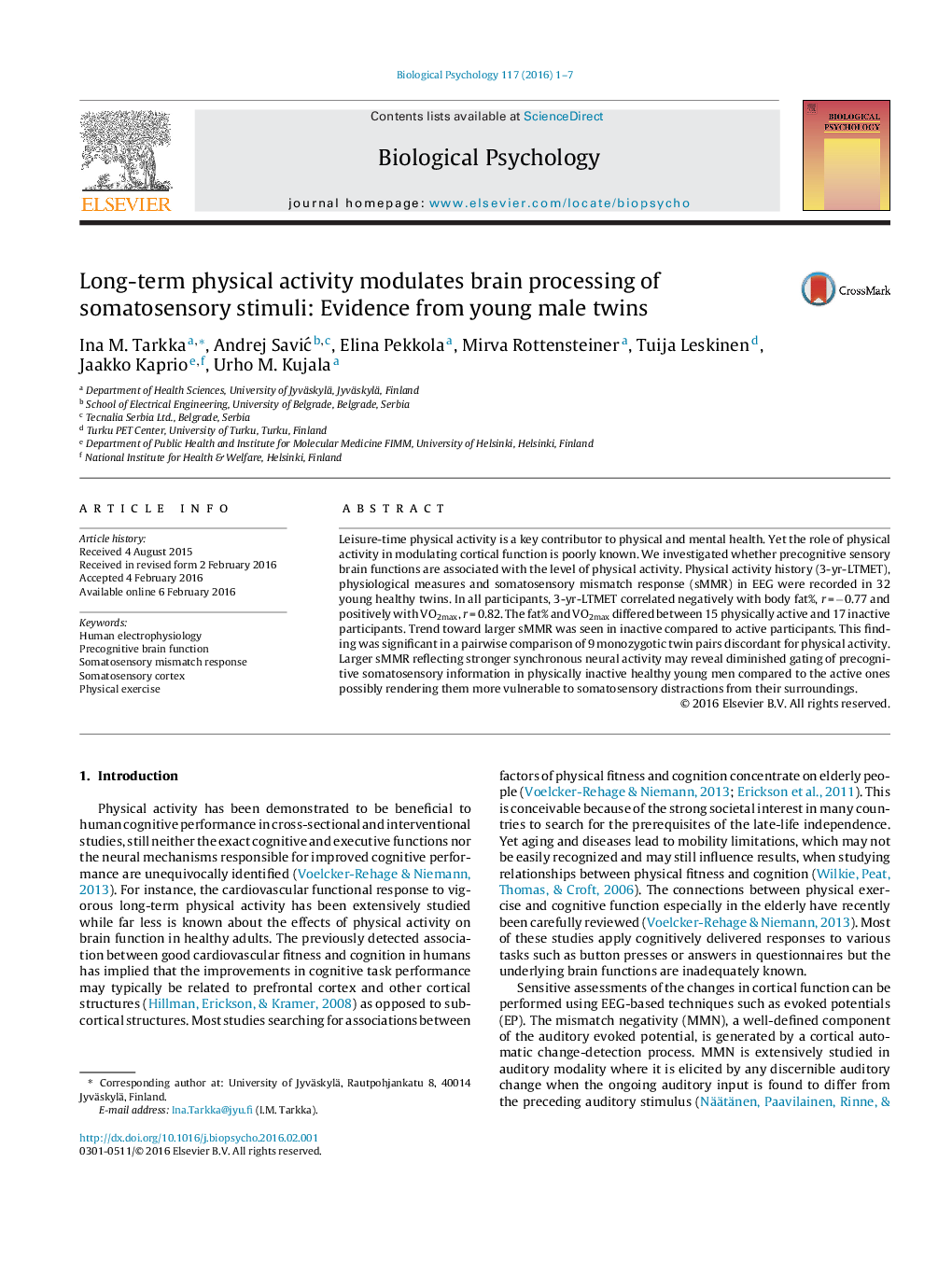| Article ID | Journal | Published Year | Pages | File Type |
|---|---|---|---|---|
| 920691 | Biological Psychology | 2016 | 7 Pages |
•Relatively small location difference in cutaneous electrical stimulation elicited precognitive somatosensory mismatch response.•Precognitive somatosensory brain processing was influenced by physical activity.•Larger somatosensory mismatch response was observed in inactive individuals than in active ones within monozygotic pairs.
Leisure-time physical activity is a key contributor to physical and mental health. Yet the role of physical activity in modulating cortical function is poorly known. We investigated whether precognitive sensory brain functions are associated with the level of physical activity. Physical activity history (3-yr-LTMET), physiological measures and somatosensory mismatch response (sMMR) in EEG were recorded in 32 young healthy twins. In all participants, 3-yr-LTMET correlated negatively with body fat%, r = −0.77 and positively with VO2max, r = 0.82. The fat% and VO2max differed between 15 physically active and 17 inactive participants. Trend toward larger sMMR was seen in inactive compared to active participants. This finding was significant in a pairwise comparison of 9 monozygotic twin pairs discordant for physical activity. Larger sMMR reflecting stronger synchronous neural activity may reveal diminished gating of precognitive somatosensory information in physically inactive healthy young men compared to the active ones possibly rendering them more vulnerable to somatosensory distractions from their surroundings.
